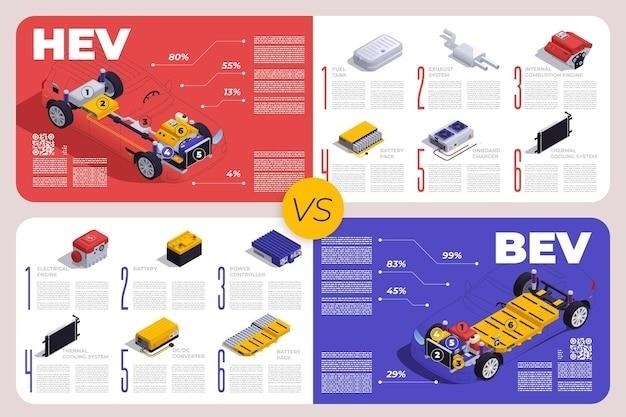instruction tuning vs prompt tuning

Instruction Tuning vs. Prompt Tuning⁚ A Comparative Analysis

This analysis contrasts instruction tuning and prompt tuning, two methods for adapting large language models. Instruction tuning fine-tunes model parameters on instruction-following datasets, while prompt tuning optimizes input prompts without altering model weights. Both enhance model performance for specific tasks, offering distinct advantages depending on resource availability and task complexity.
Introduction⁚ Understanding the Need for Adaptation
Pre-trained large language models (LLMs), while powerful, often require adaptation for optimal performance on specific tasks. Their broad training datasets equip them with general linguistic knowledge, but fine-grained control and task-specific expertise are usually lacking. This necessitates techniques to tailor these models without entirely retraining from scratch, a resource-intensive and time-consuming process. Two prominent methods emerge⁚ instruction tuning and prompt tuning. Instruction tuning directly refines the model’s internal parameters using datasets of instructions and corresponding outputs. Conversely, prompt tuning leverages carefully crafted input prompts to guide the model’s behavior without modifying its core architecture. The choice between these methods hinges on factors such as available resources, data availability, and the desired level of model customization. This comparative analysis will delve into the nuances of each approach, highlighting their strengths, weaknesses, and ideal applications.
Fine-Tuning⁚ Adjusting Model Parameters for Specific Tasks
Fine-tuning is a widely used technique to adapt pre-trained LLMs for specific downstream tasks. It involves adjusting the model’s internal parameters—its weights—based on a new, task-specific dataset. This dataset usually consists of labeled examples, providing the model with the desired input-output relationships for the target task. The process recalibrates the model’s existing knowledge, allowing it to better generalize to the nuances of the new context. Fine-tuning effectively refines the model’s understanding and response generation capabilities for the specified application. However, this method requires significant computational resources and a substantial, high-quality dataset. The risk of overfitting—where the model performs well on the training data but poorly on unseen data—is also a significant concern, especially with limited datasets. The extensive parameter adjustments also make fine-tuning a time-consuming process, particularly for large-scale LLMs. Despite these challenges, fine-tuning remains a powerful approach for achieving high performance on specific, well-defined tasks when sufficient resources are available.
Prompt Tuning⁚ Leveraging Input Modifications for Task Adaptation
Prompt tuning offers a parameter-efficient alternative to fine-tuning for adapting LLMs. Instead of modifying the model’s internal parameters, prompt tuning focuses on optimizing the input prompts themselves. This is achieved by adding tunable embeddings—adjustable vectors—to the input text. These embeddings act as additional context, guiding the model’s response towards the desired output without altering the model’s core architecture. The model’s pre-trained weights remain frozen, preserving its general knowledge while enhancing its performance on specific tasks. This approach requires significantly fewer computational resources and less training data compared to fine-tuning. Prompt tuning is particularly advantageous when dealing with large, computationally expensive LLMs where full fine-tuning is impractical. The method’s efficiency makes it well-suited for rapid prototyping and iterative development. However, the effectiveness of prompt tuning relies heavily on the careful crafting of the input prompts and the selection of appropriate embeddings. Finding the optimal prompts might require experimentation and iterative refinement. While highly efficient, prompt tuning might not always achieve the same level of performance as fine-tuning, particularly for complex tasks requiring deep model adaptation.
Instruction Tuning⁚ A Specialized Fine-Tuning Approach

Instruction tuning represents a specialized form of fine-tuning explicitly designed to enhance a language model’s ability to follow instructions. Unlike standard fine-tuning, which adapts the model to specific tasks using diverse data, instruction tuning utilizes a dataset comprising natural language instructions paired with their corresponding desired outputs. These instructions guide the model toward performing a variety of tasks, fostering improved generalization and adherence to diverse instructions. The training process involves adjusting the model’s internal parameters based on the provided instruction-output pairs, refining its understanding of various instructions and their intended actions. This approach results in a model better equipped to handle a broader range of tasks presented as natural language instructions. While instruction tuning leverages the benefits of fine-tuning, its focus on instruction-following tasks sets it apart. The resulting model exhibits enhanced adaptability to diverse instructions, making it particularly useful for applications requiring flexible task execution based on natural language inputs. However, it requires a carefully curated dataset of instructions and outputs, which can be time-consuming to create. The performance of the resulting model is highly dependent on the quality and diversity of the training data used in the instruction tuning process.
Parameter Efficiency⁚ Comparing Resource Requirements
A key distinction between instruction tuning and prompt tuning lies in their resource demands. Instruction tuning, being a form of fine-tuning, necessitates updating a substantial number of model parameters; This process demands considerable computational power and memory, especially when dealing with large language models possessing billions of parameters. The training process can be computationally expensive, requiring significant time and resources. In contrast, prompt tuning stands out for its parameter efficiency. By leaving the model’s core parameters frozen, prompt tuning only adjusts a small set of parameters associated with the input prompts (embeddings). This drastically reduces computational needs, making it more accessible for users with limited resources. The reduced memory footprint and shorter training times make prompt tuning a more practical option for those with constrained computational capacity. While instruction tuning may yield potentially superior performance in certain scenarios due to the extensive parameter adjustments, prompt tuning offers a significant advantage in terms of resource efficiency. The choice between these methods often hinges on a trade-off between performance gains and the availability of computational resources. Prompt tuning provides a compelling alternative when resource constraints limit the feasibility of full fine-tuning.
Data Requirements⁚ Dataset Needs for Each Method
The data requirements for instruction tuning and prompt tuning differ significantly, impacting their applicability in various scenarios. Instruction tuning demands a substantial, labeled dataset comprising instructions and corresponding desired outputs. This dataset needs to be carefully curated and annotated, which can be a time-consuming and labor-intensive process. The size of the required dataset often scales with the model’s size and complexity, potentially requiring millions or even billions of examples for optimal performance. Acquiring and preparing such a large, high-quality dataset is a major hurdle for many applications. In contrast, prompt tuning exhibits significantly lower data requirements. While some data is still needed for optimization, the quantity is considerably less than that needed for instruction tuning. The focus shifts from massive labeled datasets to carefully crafted prompts designed to guide the model’s behavior. This reduced data dependence makes prompt tuning attractive for scenarios with limited data availability or where data acquisition proves costly or challenging. The lowered data demands translate to reduced preparation time and costs, making prompt tuning a more practical choice when dealing with constrained resources. The choice between these methods depends heavily on the availability and cost of acquiring and preparing suitable datasets.
Choosing the Right Method⁚ Use Cases and Considerations
Selecting between instruction tuning and prompt tuning hinges on several key factors. Instruction tuning excels when high accuracy and generalization across diverse tasks are paramount, particularly when ample labeled data is available. Its strength lies in its ability to deeply integrate new knowledge into the model, leading to improved performance on a wide range of instructions. Conversely, prompt tuning proves more efficient when resources are limited or rapid prototyping is needed. Its low data requirements and minimal computational overhead make it ideal for quick experimentation and iterative development. The choice also depends on the nature of the task. If the task involves complex reasoning or requires a deep understanding of nuanced instructions, instruction tuning might be preferred. For simpler tasks or those involving pattern recognition, prompt tuning’s efficiency might outweigh its potential limitations in accuracy. Finally, the availability of computational resources plays a crucial role. Instruction tuning demands substantial computing power, while prompt tuning is significantly less demanding. This makes prompt tuning an attractive option for users with limited access to high-performance hardware. Careful consideration of these factors ensures choosing the optimal method for the specific application.
Real-world Examples⁚ Applications of Each Technique
Instruction tuning finds practical application in scenarios demanding high accuracy and robust instruction following. For instance, in building a sophisticated chatbot, instruction tuning can enable the model to understand and respond appropriately to a wide array of user queries, even complex or ambiguous ones. This results in a more natural and engaging conversational experience. Similarly, in the medical field, instruction tuning can be used to train models to accurately interpret medical reports, enabling faster and more precise diagnoses. Prompt tuning, on the other hand, proves useful in applications where rapid adaptation and efficiency are key. A company might use prompt tuning to customize a pre-trained language model for sentiment analysis of customer reviews, quickly adapting the model to the nuances of their specific product or industry. Another example is a developer leveraging prompt tuning to fine-tune a code generation model for a specific programming language or framework, enhancing code quality and reducing development time. These examples highlight the diverse applications of both techniques, showcasing their versatility in tackling real-world problems across various domains. The choice between them depends on the specific needs of the application, balancing accuracy, efficiency, and resource constraints.
Challenges and Limitations of Each Approach
Instruction tuning, while powerful, faces challenges related to data requirements. Creating high-quality instruction datasets is both time-consuming and expensive, requiring expert annotation and careful curation. The sheer volume of data needed for effective tuning can also be prohibitive for many applications. Furthermore, instruction tuning can lead to overfitting if the training data doesn’t adequately represent the diversity of real-world instructions. This can limit the model’s generalization ability to unseen instructions. Prompt tuning, while more efficient in terms of data and computational resources, faces its own set of limitations. Crafting effective prompts that consistently elicit the desired behavior from the model can be challenging, requiring iterative experimentation and refinement. The performance of prompt tuning is highly dependent on the quality and design of the prompts themselves, and suboptimal prompts can significantly hinder the model’s accuracy. Another limitation is the difficulty in generalizing prompt tuning across different tasks or domains. A prompt that works well for one task may not be effective for another, requiring separate prompt engineering for each application. Both methods present unique hurdles that researchers and practitioners must address to unlock their full potential.
Future Trends⁚ Advancements in Parameter-Efficient Tuning
Future research in parameter-efficient tuning will likely focus on bridging the gap between the effectiveness of full fine-tuning and the efficiency of methods like prompt tuning. Hybrid approaches combining aspects of both techniques are promising avenues of exploration. This could involve fine-tuning only specific parts of the model, such as attention mechanisms or output layers, while leaving the majority of the parameters frozen. Furthermore, advancements in meta-learning techniques could allow models to adapt more quickly and efficiently to new tasks with minimal fine-tuning. Research into more sophisticated prompt engineering strategies, including the use of automated prompt generation and optimization algorithms, will further enhance the effectiveness of prompt tuning. Exploring different embedding spaces and architectures for soft prompts could unlock greater potential for controlling model behavior. The development of more robust evaluation metrics specifically designed for parameter-efficient tuning methods will aid in comparing and selecting the most effective approaches. Ultimately, the goal is to develop techniques that achieve high performance while minimizing computational cost and data requirements, making advanced language models accessible to a wider range of applications and users.
Synergies and Potential Combinations
Instruction tuning and prompt tuning represent complementary approaches to adapting large language models. While instruction tuning excels in scenarios requiring extensive model recalibration for complex tasks, prompt tuning offers a resource-efficient alternative for rapid adaptation to specific contexts. The optimal choice depends heavily on available resources, data quantity, and the desired level of performance. Future research might explore hybrid methodologies, combining the strengths of both techniques. For instance, a model could be initially instruction-tuned for foundational capabilities, then further refined using prompt tuning for targeted tasks. This combined strategy could leverage the robustness of instruction tuning while retaining the efficiency of prompt tuning. Such hybrid approaches would likely yield superior performance compared to either method in isolation, offering a flexible and powerful framework for adapting large language models to a diverse range of applications. The key lies in understanding the strengths and limitations of each technique and strategically combining them to maximize performance and efficiency.
Leave a Reply
You must be logged in to post a comment.